The World of Equine Art
by Juliet R. Harrison
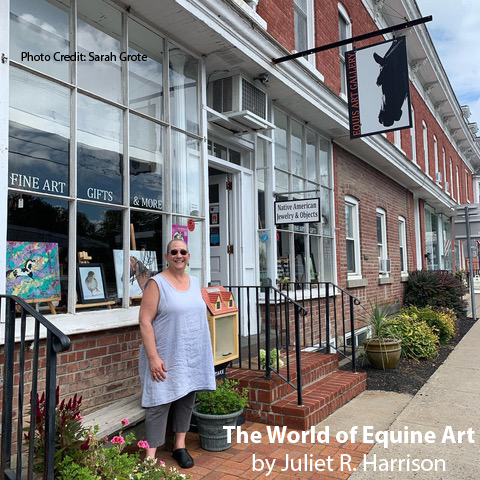
As an equine art gallery owner and former fine art equine photographer, I have had the unique opportunity to explore the nature of equine focused art. You might notice that I say “equine” art vs. “equestrian” art. Equestrian art, more often known as “sporting art”, is focused as much on the sport and the people connected to it, as it is the horses used in that sport. Think the horse and hound fox hunting or horse racing paintings of the past. Not that that work is any less wonderful, but I personally know less about it and those who produce it.
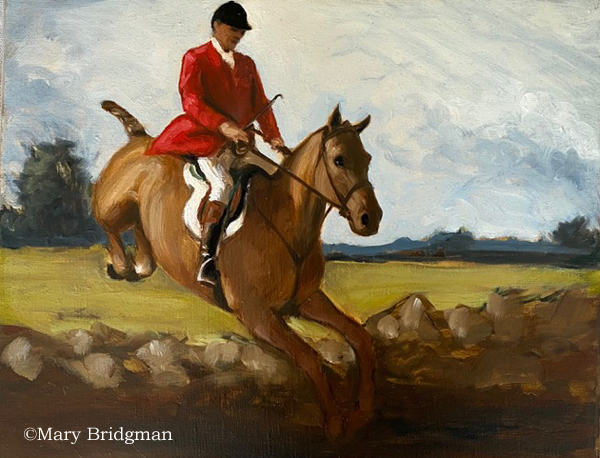
The horse as art subject, has been explored since early man produced images on cave walls. And ever after. Maybe it is because the horse has been an essential partner in our own human evolution. First as food and one domesticated, as transportation and beast of burden, conveying plow and wagon….as well as human.
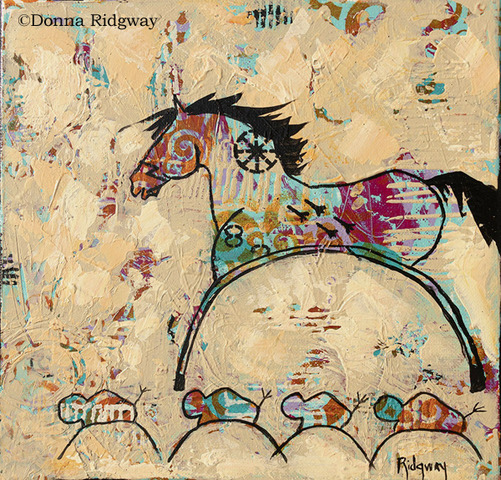
Those, like me, who love the horse in history and as current companion, relish seeing it in all of its beauty and form. The equine artist shares that with us. From photo realism to pure minimal abstraction and oil paint to sculpture. It may be thought of as a niche market, but I have seen artwork depicting the horse touch so many who come to my galley. Some are pure horse lovers. For others that see the work it calls to them because of the setting or the way the artist has conveyed something elemental in their subjects. Something that sometimes the viewer might not even be able to put into words. But it calls to them.
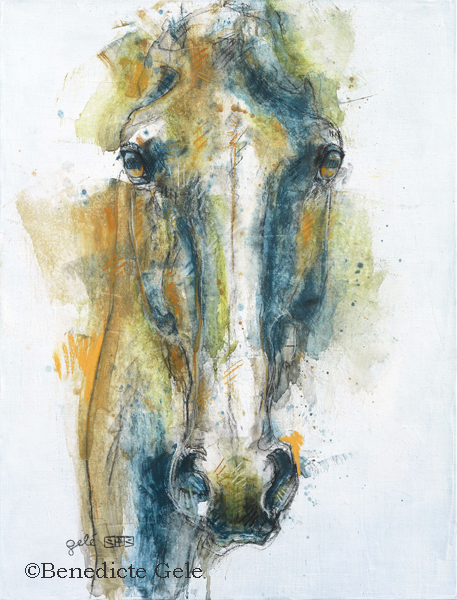
There was a time, before the invention of the car, when horses were everywhere. In the country and in cities. They provided the movement of goods and transportation of people. Because of that, artists had ready access to models for their paintings. Most people around the world had interactions with horses every day. On farms, in backyard stables and city streets. Familiarity with the horse anatomy and trappings was easy to come by. Literal hands-on experience. As the use of horses in the Western world got less and less….and the number of horses in our lives dwindled, so did the ease and amount of equine representation. The horse in art because a relic or only considered important to those wealthy individuals who had horses for sport use. The elite individuals, who might commission paintings of the horses that they owned. And those “sport” horses were the fox hunters, racehorses and show horses. The everyday individual no longer interacted with horses much.
Of course, it is always interesting to note that in impoverished areas of the world, where the cost of technology is beyond the reach of the average person, horses and donkeys are still used as human partners. And let us not forget the importance of the horse and the horse in art from the Western United States. What is often called Cowboy Art…….is full of images of horses at work.
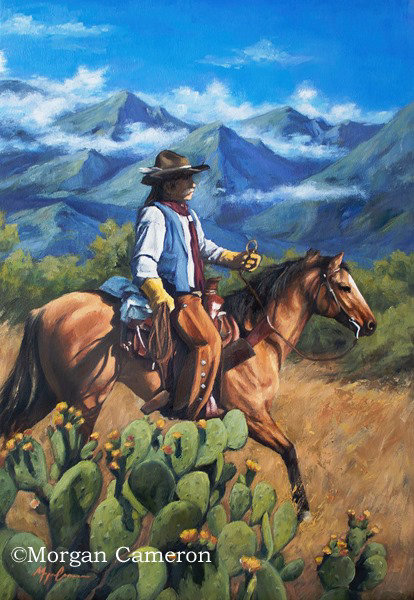
But the truth is that major art collectors in the West, moved away from interest in equine art, at about the same time that they moved away from using the horse in their everyday lives. The horse is now primarily, a possession of the wealthy. And the depiction of the horse, an interest of the wealthy. Which leads back to the argument that for the most part, what was supported by collectors has been the horse as used in sport or in portraits of beloved animals.
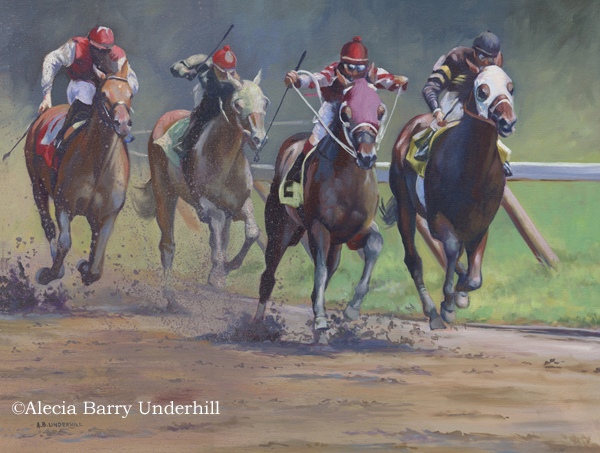
In general art collectors may have moved away from interest in collecting equine art and galleries may relegate the depiction of the horse, to being lumped in some beleaguered category identified with some derision as “animal art”. Artists struggle to find acceptance for equine art in the marketplace. Often directed to other subjects in art schools, by being told that they will not find acceptance for their work in the art market. What amazes me is that there are so many artists hidden out there, who did not give up. So many drawn to the horse as their subject. So many creating work that is very expressive. Very non-traditional in execution.
Very often these artists are the same people riding, breeding, training and owning horses. What they are drawn to for their work, is what they are drawn to in their lives. They may not verbalize that historical and elemental connection of human and horse. But it is there in their work. They create, in spite of the teachers. They create, in spite of the marketplace. They create from their heart and soul. They bring to their work all that they know and feel about the horse. And it resonates in their work. Those who create beautiful human portraits bring all that they know about being human to that work. It is why we respond with understanding when we see a really good portrait. The best equine artists do the same with horses. I often say that the best equine artists not only show you a moment in time, they also bring to that work their understanding of what happened right before that moment, and can anticipate in the work what may happen next. Even in the most abstracted of styles, it is that expression that makes the work breathe. What makes even the non “horse” person connect to the work.
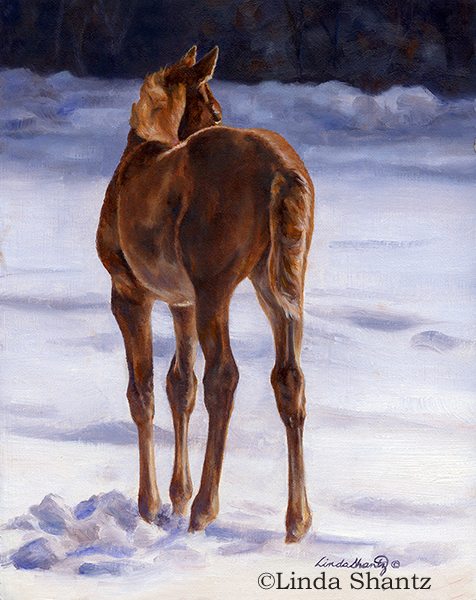
The dilemma for those artists, is finding avenues to market that work. Finding galleries who can see beyond any preconceived notion of what is worth representing. There are a number of wonderful equine artists around the world. After 9 years in with my own gallery and many years before that with my own work, I can say that I have found a handful of galleries dedicated to showing contemporary equine art. If that many. Some are only online. Some only show regional artists. In addition, there are many a dozen galleries around the world that might have an equine art show once a year. Yes, there are full time sporting art galleries that might take a gamble on one or two more non-traditional artists in their stable. Certainly there are Western art galleries that show art with horses. Usually, they are not as much focused on the horse, as they are ranch life, Native American scenes and maybe horses in the landscape. And again, some may show a few more contemporary artists. Sadly, what this often means is that those pursuing equine art as a genre, my start creating work that conforms more to those ideals. They may have to do more commissioned work in more traditional portrait styles. Or they may give up creating equine art all together. The pursuit of a career in art is nearly impossible even for the most conforming of artists. For an equine artist, it is worse.
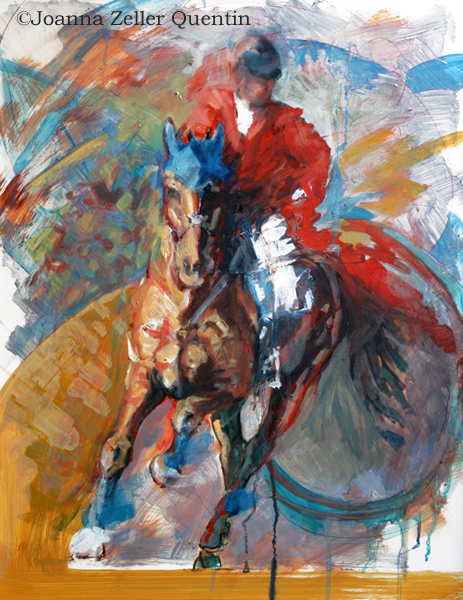
BUT – what I truly believe is that there is a market for this work. Because of what the horse means to us as human beings. Because of the connections that even those totally out of the horse world, make to the horse. Because of our elemental partnership. Or simply because of the beauty of the horse. For my business, it is imperative that I believe this to be true. And I strongly encourage artists to pursue whatever subjects call to them.
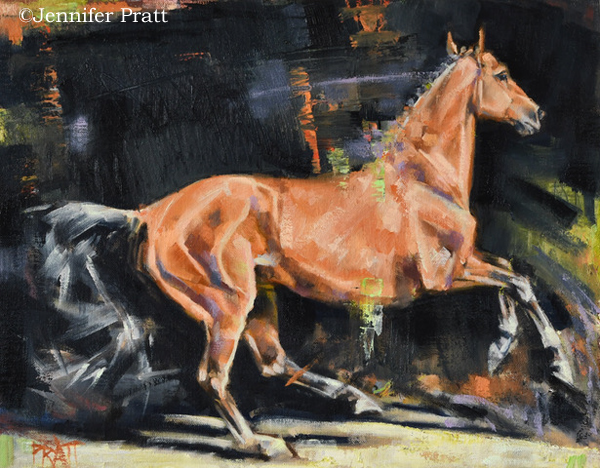
After 9 years owning an art gallery that is dedicated to the representation of contemporary equine art, it is clear to me that there is a market for it. Yes, I do get the visitor who comes in and makes some kind of remark like….”Oh somebody likes horses”. But more come in and see what is there as something special. They make comments about the variety of the work, that all depicts the horse. The variety of styles, mediums, horse breeds and disciplines shown in the work. We just need to educate the collector. Or maybe just make the work available to them so that they can connect to it as we do. I am amazed and gratified to see the number of artists creating equine art, that contact me each week for representation. The number of collectors who tell me that they wish I was able to open satellite galleries all over the world so that they could come and see the work in person. With just about 850 square feet, it is a squeeze to find space for the just over 30 artists that I do carry. My collectors are all over the world on every continent. Which shows me that there is a market for this work. It is appreciated. For those who love the horse, know that there is artwork out there that will speak to that love. For artists pursuing work that focuses on the horse, keep doing it.
The photos included herein are of works of art that are available for purchase at Equis art galley at time of publication.


